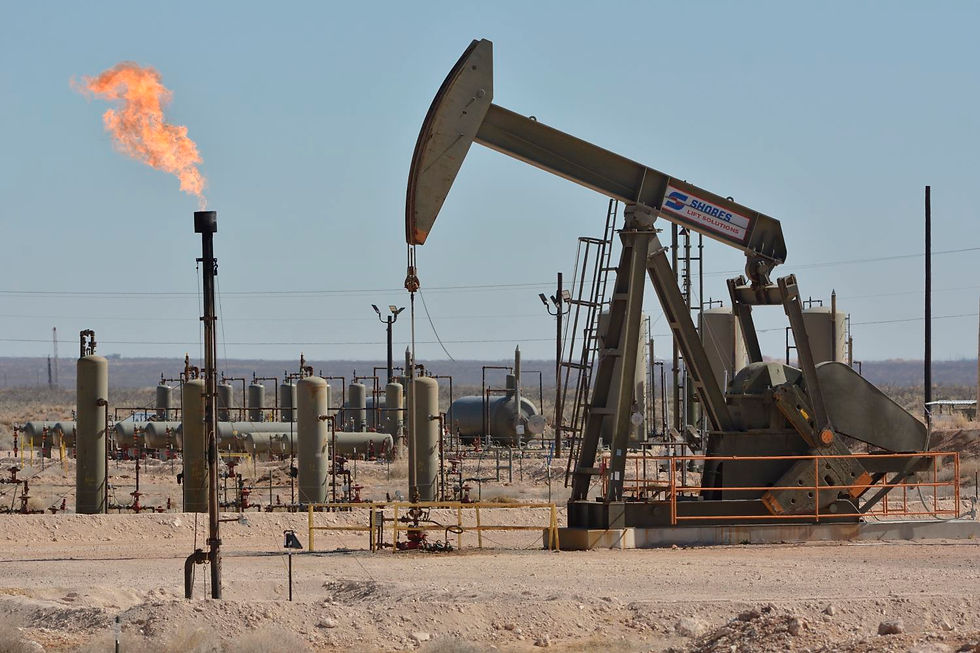Predicting well openings to production in mature oil fields with high water cuts (II)
- Angel Solutions (SDG)

- Jul 2, 2024
- 3 min read
Updated: Oct 14, 2024
The oil and gas (O&G) industry is currently dealing with challenges stemming from low prices and environmental and global agendas. Small to medium companies in the oil and gas sector need to optimize their resources and budgets to remain viable, especially those operating in areas with high water cuts like the Gulf San Jorge in the Chubut province, Argentina.

Billions of barrels of oil, worth trillions of dollars, are still trapped underground in thousands of mature fields around the world. Data analytics techniques can efficiently extract this valuable resource at the lowest cost and provide valuable insights from underutilized data in a short timeframe.
Following a previous use case, this post introduces a cost-effective cloud-based end-to-end analytic solution to address the outlined issue. It utilizes advanced data preparation, Auto Machine Learning (AutoML), and advanced visualization techniques.
The diagram below depicts the solution pipeline. It was designed and deployed on the Google Cloud Platform (GCP). Initially, an input CSV file is uploaded to Google Cloud Storage (GCS), then processed in Trifacta Dataprep, saved in GCS, and integrated with the DataRobot Workbench AutoML platform, through BigQuery, for a binary classification task. Subsequently, the outcomes are combined with relevant well and production data, published back in BigQuery, and presented in Google Looker Studio as easily understandable, fully interactive dashboards and visualizations.

In the previously mentioned use case, machine learning was implemented using Python and deployed in Google Colab. Only three algorithms were considered to address the classification task: Logistic Regression, Decision Trees, and XGBoost algorithm. This labor-intensive process will only be expanded to a few more algorithms.

On the other hand, DataRobot's AutoML platform can run tens or even hundreds of models, rank them, and present them on a leaderboard. This allows the user to analyze each model individually based on established metrics (see the image above) and compare them, as shown in the image below.

A Workbench Application can now be created using the best-performing or reliable model. This application includes a comprehensive resume and walkthrough and allows users to make predictions, assess, and export predictive probabilities using new data not included in the training process. It will help recommend which wells, for example, those currently temporarily closed or waiting for repairs, are likely and very likely to be successfully reopened for production.

The image above shows the results generated using the Logistic Regression algorithm using Python and displayed in Google Looker Studio. The distribution of Predicted Probabilities, as shown in the top-left corner map and the bar plot, is skewed towards high values, indicating a tendency of the Median to be rather optimistic. A filter was set up to remove probability values too close to 1. This task was implemented and deployed in Google Colab.
The image below displays the results obtained from the DataRobot AutoML platform using the Elastic-Net Classifier (mixing alpha = 0.5 / Binomial Deviance) algorithm. The probabilities are now more balanced and distributed without additional filters, and the median shows a conservative yet more realistic tendency.

The images below display the predictions of both Logistic Regression (LG) and the Elastic-Net Classifier (ENC) for the PIEDRA CLAVADA (CGSJ-IV) reservoir. As expected, the LG recommended considering opening 63 wells, while the ENC suggested only 16 wells. Additionally, in the LG predictions, several candidates are represented by dark wine-colored bubbles in the top left map of the dashboard, while in the ENC predictions (bottom image), the balance between black and dark wine-colored bubbles is more realistic and evenly distributed.


The approach outlined here involves the use of Google Cloud Platform services, tools, and the AutoML DataRobot platform to help reservoir engineers and analysts easily gain in-depth, crucial insights from the company's existing data, which is often siloed and not fully utilized. Curious to know more...?
DATAMATE/DataRobot, in partnership with Angel Solutions (SDG) and its trusted partners Geoloil PETROPHYSICS and MineaOil Ltd, comprises highly trained professionals that are prepared and equipped with the best AI-powered platform and tools to effectively handle and provide solutions for your data project needs, regardless of type or volume.
Feel free to reach out to us directly or through our partner for prompt and reliable assistance.



Comments